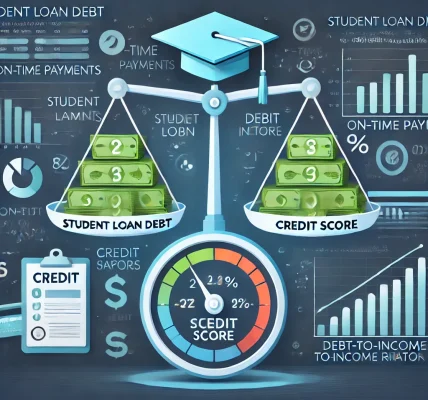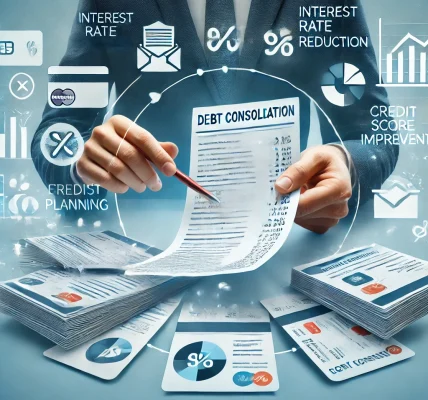Credit cards can be a convenient tool for managing expenses, earning rewards, and building credit. However, if not used wisely, they can lead to debt accumulation due to high-interest rates. The key factor influencing your credit card debt is the Annual Percentage Rate (APR). Understanding how APR works and learning strategies to lower it can help you save money and maintain financial stability. This DIY guide explains how credit card APR affects your debt and offers practical ways to reduce it.
1. What is Credit Card APR?
APR stands for Annual Percentage Rate, which represents the cost of borrowing money on your credit card. It is the interest charged on unpaid balances and is expressed as a yearly rate. However, credit card companies typically calculate interest on a daily basis, compounding the amount owed over time.
Types of Credit Card APR
- Purchase APR: The interest applied to purchases if you don’t pay your balance in full.
- Balance Transfer APR: The rate applied to balances transferred from another card.
- Cash Advance APR: A higher interest rate charged for withdrawing cash using a credit card.
- Penalty APR: A higher rate applied if you miss payments or violate the card’s terms.
- Introductory APR: A temporary lower or 0% interest rate offered for a set period.
Understanding these different APR types helps you make informed financial decisions and avoid unnecessary debt.
2. How APR Affects Your Debt
APR directly impacts how much you owe if you carry a balance. The higher the APR, the faster your debt grows due to compounded interest.
Example of How APR Works
Suppose you have a $2,000 balance on a credit card with a 20% APR, and you only make the minimum payment each month:
- Interest is charged daily: (20% / 365 days) = 0.0548% daily interest
- If you don’t pay the full balance, the interest accumulates.
- Over time, you could end up paying hundreds or even thousands of dollars extra.
If you only make minimum payments, it could take years to pay off the balance. Understanding APR’s effect on debt helps you prioritize payments and avoid excessive interest charges.
3. How to Reduce Your Credit Card APR
If you currently have a high APR, there are several ways to reduce it and minimize interest payments.
1. Pay Your Balance in Full Each Month
The best way to avoid paying interest is to pay off your credit card balance in full by the due date. This ensures that no interest accumulates on your purchases.
2. Negotiate a Lower APR with Your Issuer
Many credit card companies are open to reducing your APR if you have a good payment history. Steps to negotiate:
- Call your credit card issuer and politely request a lower APR.
- Highlight your good payment history and loyalty as a customer.
- Mention competitive offers from other credit cards.
- Be persistent and follow up if necessary.
3. Transfer Your Balance to a Low-Interest Card
If you have a high-interest card, consider a balance transfer to a card with a 0% APR introductory offer.
- Look for a 0% APR offer that lasts for at least 12-18 months.
- Check for any balance transfer fees (typically 3-5% of the balance).
- Pay off the balance before the promotional period ends to avoid higher rates.
4. Improve Your Credit Score
A higher credit score can help you qualify for lower interest rates. Steps to improve your credit score:
- Pay bills on time every month.
- Keep your credit utilization below 30%.
- Avoid opening too many new credit accounts.
- Check your credit report for errors and dispute inaccuracies.
5. Opt for a Lower-APR Credit Card
Some credit cards have lower APRs than others. Consider switching to a card with a lower interest rate if you tend to carry a balance.
6. Set Up Automatic Payments to Avoid Penalty APRs
Missing a payment can lead to a penalty APR as high as 29.99%. Avoid this by:
- Setting up automatic minimum payments.
- Enabling payment reminders through banking apps.
- Scheduling payments right after your paycheck to ensure funds are available.
4. Common Myths About Credit Card APR
Myth #1: Paying the Minimum Payment is Enough
- Reality: Making only the minimum payment leads to long-term debt and high-interest costs.
Myth #2: APR Only Matters for Late Payments
- Reality: APR applies to any unpaid balance, not just late payments.
Myth #3: All Credit Cards Have the Same APR
- Reality: APR varies based on the credit card type, issuer, and individual creditworthiness.
Myth #4: Balance Transfers Are Always Free
- Reality: Most credit cards charge a transfer fee, and the introductory APR is temporary.
5. Legal Protections Against High APRs
Consumers have legal rights to protect against unfair credit card practices:
- CARD Act of 2009: Requires lenders to disclose APR changes and prohibits excessive fees.
- Fair Credit Billing Act: Allows disputes for billing errors and unfair charges.
- Truth in Lending Act: Ensures transparent disclosure of interest rates and terms.
Always read your credit card agreement carefully to understand your rights and responsibilities.
6. Smart Credit Card Usage to Minimize Interest
To keep APR from negatively impacting your finances, follow these best practices:
- Use credit cards for planned purchases and not impulse spending.
- Stick to a budget to avoid overspending.
- Track your expenses regularly to identify high-interest charges.
- Consider using a budgeting app to manage your payments.
- Avoid cash advances, as they have the highest APRs.
Conclusion
Understanding and managing your credit card APR is essential for maintaining financial health and avoiding unnecessary debt. By making full payments, negotiating lower rates, transferring balances, and improving your credit score, you can minimize interest charges and maximize savings. Responsible credit card use not only helps you build a strong credit history but also ensures long-term financial security. Take control of your APR today and use your credit card as a powerful financial tool rather than a source of debt.




